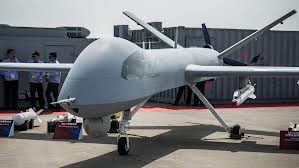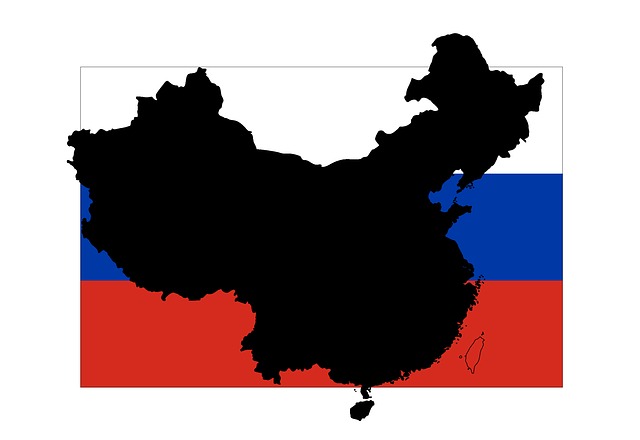A Seemingly Sporadic Aerial Standoff and its Implications
Earlier this month, as the crisis in Syria continued to dominate the media’s attention, an incident took place above the still disputed Senkaku Islands/Diaoyudao/Diaoyutai islands (as Japan, China and Taiwan all lay claims to sovereignty over these uninhabited islands and name them differently). This incident, featuring a Chinese unmanned aerial vehicle (UAV) or drone, and Japan’s F-15 fighter jets, went largely unnoticed. The timing of this event could not be more controversial. According to Foreign Policy Magazine, Beijing sent the drone out with the ostensible intention to showcase the prowess of its aerial technology, utilizing drones as the way to “graciously commemorate the one-year anniversary” of Tokyo’s attempt at nationalizing the islands. This unusual encounter passed without incident as each side showed restraint. However, this event represented the first ever known case of Chinese drone deployment.
More importantly, China’s development of UAV technology might usher a new arms race in East and South East Asia as states that have been engaged in the ongoing territorial/maritime and sovereignty disputes with China (or with their neighbors) will seek the chance to upgrade their own military capabilities. Coupled with factors like America’s policy of pivoting towards Asia, the mercurial North Korea, the lack of precedence of deploying more advanced weapons among Asian states, and East Asia’s complicated historical entanglement, this new arms race will drive the already unstable balance of military power in the Asian Pacific to be even messier in the near future.
[captionpix align=”right” theme=”elegant” width=”300″ imgsrc=”http://natoassociation.ca/wp-content/uploads/2013/09/japanindex.jpg ” captiontext=””]
“Made in China” Drones
According to the New York Times, China has long been obsessed with the development of unmanned aerial vehicles. Starting in the late 1950s, China has grasped every possible opportunity to, from Soviet’s assistance to picking up American drones that crashed in Vietnam in the 1960s to the importation of foreign models to advance its UAV program. Thus, there is little surprise that Chinese cyber hackers have constantly targeted US military contractors in order to obtain more information about American’s technology in military drones, an industry that is widely regard as the most sophisticated and most advanced in the world.
The main reason behind China’s obsession with drones is, quite obviously, its deployment to achieve certain political ends. Unlike the US, which utilizes drones predominately for the killing of terrorist suspects in the remote regions of Central Asia rather than deploying them to enter into “contested or denied air spaces”, China, with its increasingly assertive stance, aims not only to use drones domestically (for surveillance and perhaps assaults in the remote and often seditious regions of Xinjiang and Tibet), but also to feature them in maritime situations, especially in territorial disputes.
While the aforementioned standoff in the East China Sea is the first instance in which China deployed its drones into a disputed area, China’s PLA (People’s Liberation Army) unabashedly declares that they will increase the numbers of drones entering into contested spaces. Indeed, for PLA, the drone “is a very useful instrument for safeguarding maritime sovereignty, China will gradually step up its use of UAVs in this area.”
[captionpix align=”left” theme=”elegant” width=”300″ imgsrc=”http://natoassociation.ca/wp-content/uploads/2013/09/Japon-China.jpg” captiontext=”The stability of the Asia Pacific region is extremely vital”]
At the same time, however, other East and South East Asian nations might regard drones, even the very motive and intention of developing such technology, as direct provocations and a potential threat from China. Unfortunately, in a state where China is becoming more assertive while none of the maritime states in East and South East Asia are willing to cede not only their sovereign, but also economic benefit of the sea to China dominance (obviously, the backing from the Americans and its containment policy against China also contribute to this political reality), the arms race is on.
What is at stake in Asian Pacific?
With a developing economy that is likely to boom, coupled with possessing one of the most densely populated areas in the world, Asian Pacific might be on pace to become the next driving engine of the world economy. That said, its stability is extremely vital and one would not want to see conflicts unfold in this region. However, the reality might turn out to be contrary to what many expect. With its rising status, overblown national sentiments and urgent need for energy, China is currently engaging in several maritime/territorial disputes with different nations in two maritime areas of Asian Pacific (one in the East China Sea and the other in the South China Sea) and it seems unlikely that China will slow down its development of drone technology. By the same token, those who are currently in some sort of sovereignty/territorial skirmish with China are unlikely to back down as well. Thus, if the current standoff continues, history might repeat itself as Asian Pacific becomes the new version of 20th Century Europe, where war is nothing but inevitable.




